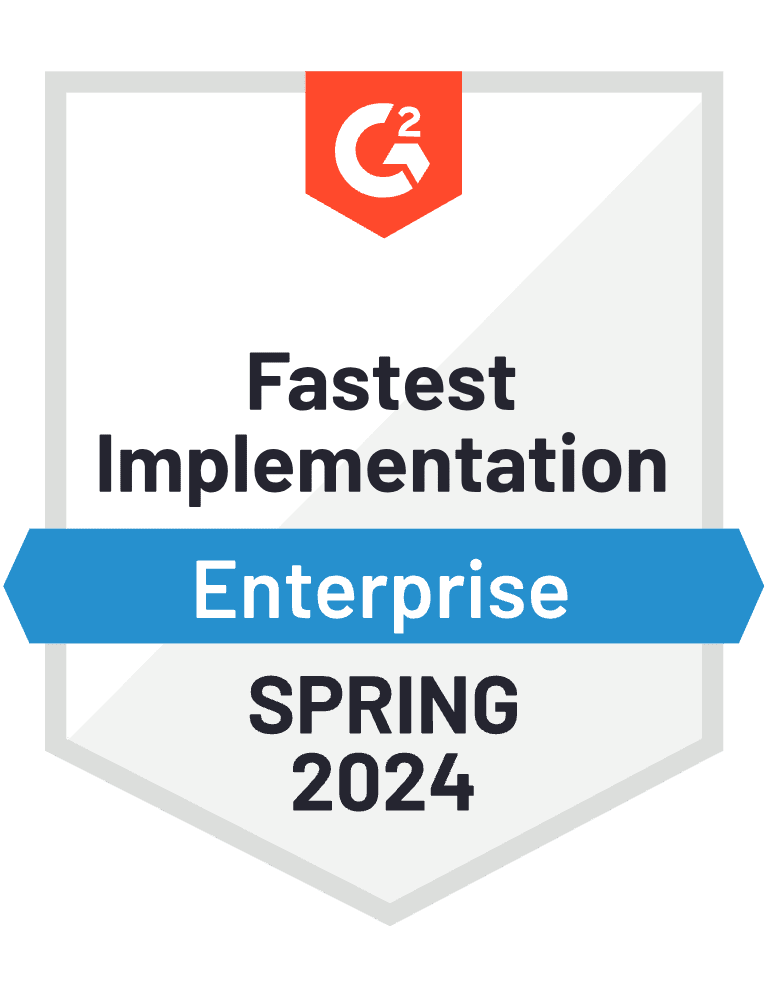First, Let’s Talk About The Challenges of RFPs
Too often, proposal professionals (or if you’re lucky, a proposal team) start each RFP from square one with no clear process in place. This lack of structure leaves them time and again, scrambling at the last minute to search, cut, copy, and paste — stuffing as much information as possible into the RFP response just to get it out the door. It’s a time-consuming, stressful and often unrewarding process that typically falls short of a company’s best effort.
If this approach isn’t working, why is it so hard to change?
Once an RFP response is out the door, the process is revisited and everyone usually agrees they will take a more strategic approach next time. However, often this never comes to fruition. But well-written RFP responses and proposals mean more business for your company. So it is worth the attention and commitment to resources to do it better BEFORE the next RFP comes through the door. By optimizing your RFP process, you will save valuable time for stakeholders throughout your organization — from subject matter experts to compliance, sales, finance, and marketing personnel.

Ok, it sounds easy enough. So, how’s it done?
10 Strategies to Create Winning RFP Responses
Oftentimes, getting started is the toughest aspect to improving the RFP response process. RocketDocs has put together 10 strategies for creating winning RFP responses that will help you improve the quality, completeness and timeliness — enabling your company to rise above the competition and win more business — without driving everyone crazy.
- ASSEMBLE YOUR A-TEAM
Let’s face it: no one should have to compile an RFP response alone. Winning new business is complex and requires a team effort. The project lead, ideally a proposal manager, will review the RFP thoroughly, compile a team based on the RFP’s objectives, and then review the scope and requirements with all stakeholders, asking the following questions:
- Is this an RFP we can realistically win?
- Do we have the time and resources to compete?
- What role will each team member play in the process?
2. DETERMINE ROI
Responding to an RFP has its risks, but the promise of a big win is oh-so tempting! But the bigger the project, the larger the investment in resources — money, time, people, etc. When the promise of significant revenue is at stake, it’s easy to jump in head first. However, taking the time to discuss the cost is worth your time. That way, once you dive in, everyone is committed to going the distance.
Optimize
Getting everyone on board is not always as easy as it seems, but establishing buy-in from various departments at the beginning makes collaboration easier and can help people be more cooperative. Discussing what the benefits of winning the RFP would mean to the company can help to bring everyone onto the same page.
3. ESTABLISH A (REALISTIC) TIMELINE
No one likes the last-minute chaos of an all-nighter the day before the RFP response is due. Give yourself and your team plenty of time to compile or create content in a format that is easy for subject matter experts to quickly and thoroughly review. Good project management means it is best to work backward from the due date and make sure you build in extra time for design, printing, packaging and, if necessary, delivery or shipping.
Optimize
One of the best ways to save time is to utilize an RFP response content database so your team can work content creation and review cycles into their schedules. Finding the right RFP solution is paramount for your business regardless of industry.

4. DELEGATE, DELEGATE, DELEGATE
With the right team in place, you can manage the distribution of questions to the appropriate specialists who are familiar with the topics assigned to them and can make strategic recommendations. Have your team review their assigned sections and submit any unanswered questions if there is any lack of clarity or confusion.
Optimize
If you have a centralized content database, team members can access content within their purview, instead of reading from start to finish. This will also save your team time by eliminating the need to respond to the same questions repeatedly by storing the most up-to-date information on the company’s products and services, making retrieval and review a snap.
6. UTILIZE SUBJECT MATTER EXPERTS
Sometimes you don’t have all the answers, but there are trusted resources within your organization or industry that do. By assigning questions to subject matter experts (SMEs) for content creation, updates or review, you will get the most precise, knowledgeable answers needed without wasting time on research. SMEs can help differentiate your response from the competition and add real value to your RFP.
Optimize
Save your SMEs valuable time by keeping a library of content on hand for continuous use in RFP responses. Have SMEs regularly review items within their purview at agreed-upon intervals so your content is always accurate and SMEs can easily change pre-existing language instead of creating new responses from scratch
7. CHECK COMPLIANCE
Everyone’s favorite word: Compliance. But these days, regulations shift at breakneck speed, so your business needs to stay on top of it or you’ll lose out to the competition. Compliance can be very exhaustive and consume a lot of time when not managed properly. With the right process in place, all team members on the project can be held accountable by encouraging them to take ownership for compliance in their areas of expertise or specialty.
Optimize
Centralized proposal management can help you maintain accuracy and control over your content by allowing compliance personnel to review and approve sections as they are completed.

8. TRACK CHANGES
We’ve all been there. You make changes to the RFP, email it to the next person and voila! They send back an additional document version with their answers, so now you need to merge the two. Using Track Changes can help you see what changes have been made to your document. But that doesn’t completely solve the problem. Setting permissions and restrictions to enable content read-only access or editing permissions based on the roles and needs of users can help eliminate missed or mistakenly deleted changes and updates.
Optimize
By centralizing your documents and granting access to users with assigned permissions, you can manage the process with tracking tools that show you every change made, as well as where, when, and by whom – protecting the integrity of your content without wasting time and effort merging conflicting versions of the documents.
9. APPOINT A FINAL EDITOR
Too many cooks in the kitchen can be a real problem. Particularly when you have multiple writers, using various styles and formats, not to mention that final effort of assembling various proposal elements (e.g., cover letter, executive summary, questionnaire, appendices) into a single polished package. That’s enough to keep anyone up all night. But there is value in assigning one or two people to be the final eyes and ears for a proposal to make stylistic, grammatical and formatting changes to ensure consistency.
Optimize
Don’t wait until the last minute to run into a major error that needs correcting. With centralized RFP proposal management, editors can review sections as they are completed, saving time, reducing errors and ensuring quality.
10. LET YOUR BRAND SHINE
You have spent a great deal of blood, sweat, and tears establishing your brand in the marketplace. It is your key differentiator. Don’t let your RFP be just another pile of paper in the recycle bin. Modify the collective responses so that the completed RFP represents your unified brand standards, consistency, language, and tone. The more your brand shines through, the more memorable your RFP will be.
Optimize
Uploading and centrally storing templates for your brand and collateral for your various products and services doesn’t only help you streamline your RFP process, it also allows sales and marketing teams to access, edit, and share branded materials from anywhere – ensuring customers and prospects always have your latest ideas and solutions at hand.

Now Go Repeat Steps 1-10
Terrific! You have completed your RFP response and it is out the door — just in time for the next one, with a short deadline. Don’t panic. With the right team and process in place, generating a great proposal doesn’t have to make everyone crazy. Improve what you do for every RFP with a consistent process so you can spend more time tailoring the proposals and writing new material and less time chasing people and paper.
We’ve created a PDF Guide: 10 Strategies for RFP responses that win.
Are you winning in the RFP game?
In today’s digital environment, the company who can respond directly to a client’s specific request with accurate, timely and compliant data is the one who wins.
RFP response software specifically designed for RFP response and proposal management, like RocketDocs RFP Plus® , incorporates tools for content review, analysis and tracking to ensure your proposals are accurate, compliant and on message. With the software doing the tedious work, proposal writers and managers are free to do what they do best: tailor responses to meet client requirements, incorporate strategic positioning and ensure a clean, professional presentation to secure new business. For more information on how RocketDocs can help give your proposals the winning edge, contact us for a demo today









